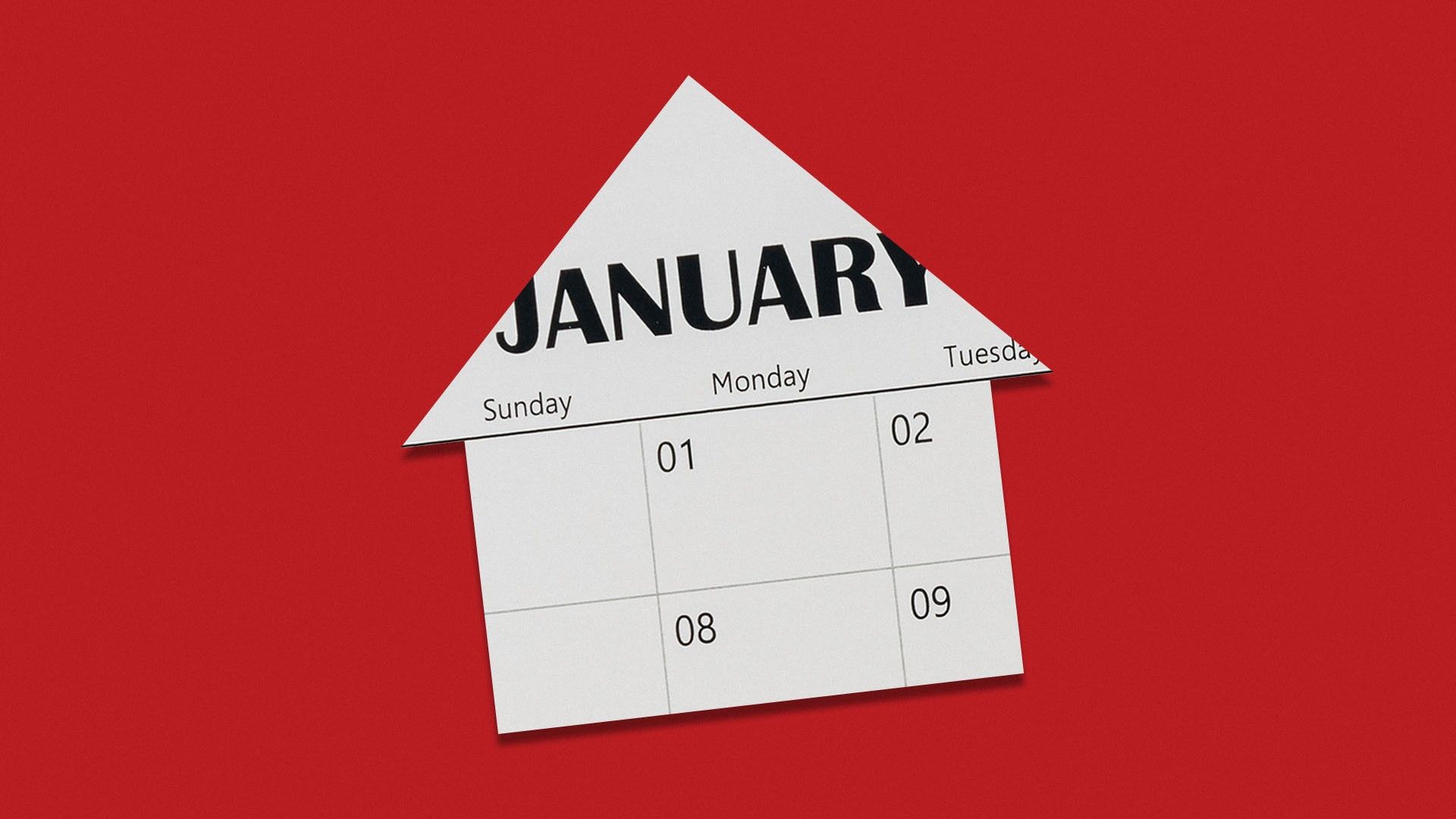All that jingling that accompanied the holiday season may have come from not only sleigh bells, but also homebuyers merrily brandishing the keys to their newly purchased house.
Home shoppers across the country enjoyed 33,251 more real estate listings in December compared with this same month last year, according to the latest housing trends report from Realtor.com®. This is the second consecutive monthly bump in homes for sale, following a 17-month dry spell of dwindling inventory.
While overall inventory was up 4.9% annually in December, the even better news is that many were fresh to market.
“New listings, in particular, were up 9.1%, providing a burst of fresh listings that buyers didn’t fully scoop up right away,” says Realtor.com Chief Economist Danielle Hale.
Does this “burst” mean the stuck-in-neutral housing market will finally rev up for buyers and sellers in the new year?
What’s driving the inventory thaw
This (relative) gush of new listings comes in the wake of falling mortgage rates.
Rates for 30-year fixed mortgages had spent 17 long weeks above 7%—even hitting a 22-year high in October—before heading south and dipping below 7% by mid-December and hitting a low of 6.61% on Dec. 28, according to Freddie Mac.
“The lower mortgage rates fall, the more likely we are to see inventory increase, because the lock-in effect that has been holding a lot of homeowners in their current homes will be less impactful,” explains Hale.
Indeed, after spending most of last year ensconced in their homes, clinging to their low existing mortgage rates, a growing number of homeowners are deciding to dip their feet in the market.
Yet as is true for most housing market news lately, these welcome numbers are still far from what the housing market was like before the COVID-19 pandemic.
“Despite this encouraging annual increase, active inventory still remained 36% below typical 2017 to 2019 levels,” adds Hannah Jones, an economic analyst at Realtor.com.
Home prices remain stable
This jolt to home inventory has done little so far to move the needle in list prices, which have long been stuck in the same basic groove.
Last December saw median home prices at $400,000, and this December wasn’t all that different, with prices hitting a cool $410,000, growing 1.2% compared with the same period a year ago.
And while prices did fall by $10,000 from November to December, that decrease is in keeping with seasonal patterns.
“Some softening in home prices” is in the cards for 2024, Hale says, but don’t expect a large decline while mortgage rates remain high.
“I don’t think we’re going to see a big break in prices, since the broader trend facing the housing market continues to be not enough supply relative to demand,” says Hale.
Homebuyers’ affordability issues continue
Buyers welcoming friendlier mortgage rates and more homes to choose from still have to contend with some tough bottom-line issues.
December’s homebuyers had to shell out way more cash per month than buyers from the same period last year (when mortgage rates were even lower). Indeed, the cost of financing 80% of the typical home rose by 6.1% in December compared with the year prior, which translates to an extra $123 per month.
Add up this math, and the equation equals affordability challenges.
“This increased the required household income to purchase the median-priced home by $4,900, to $85,664, before accounting for the cost of tax and insurance,” explains Jones.
The surprising pace of home sales
Buyers shopping for homes along with their Christmas presents wasted no time sealing the deal.
In December, homes spent 61 days on the market, which is four fewer days than last year—and a whopping two weeks shorter than the average from 2017 to 2019 before the COVID-19 pandemic.
Buyers were even more eager in the 50 biggest U.S. metros, where homes flew off the market in an average of 55 days.
Thrifty homebuyers looking to buy in a large metro should head to the South, a region with the lowest listing price growth rate at 2.3%. (For comparison, median home prices jumped 8.4% in the Northeast.) The South was also the only region that saw noteworthy yearly inventory growth—7.7% in December.
“The South is an area that has been easier to build in, and it has also been an area where we’ve seen more investor activity, which has helped its supply of homes for sale improve faster than in other areas,” explains Hale.














